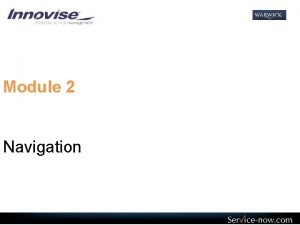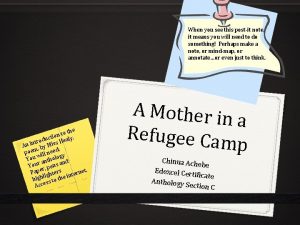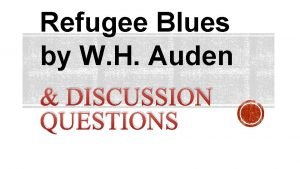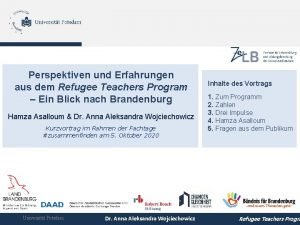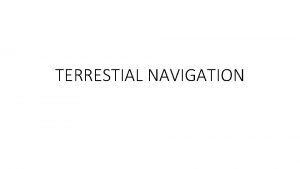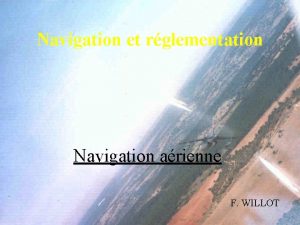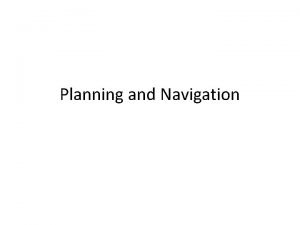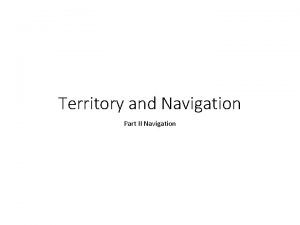SLIDE NAVIGATION Refugee 1 1 Question 2 3






- Slides: 6

SLIDE NAVIGATION Refugee 1 1. Question 2 3 4 Refugee by Alan Gratz is a historical novel about three different young people who live in different eras; a boy in 1930 s Nazi Germany, a girl from Cuba in 1994, and a boy from Syria in 2015. All three young people will go on harrowing journeys as they become refugees. All will face unimaginable dangers–from drownings to bombings to betrayals. But for each of them, there is always the hope of tomorrow. And although Josef, Isabel, and Mahmoud are separated by continents and decades, surprising connections will tie their stories together in the end. One factor tying all three stories together is the fact that all three characters are refugees. Click the image to the right in order to watch a video from the United Nations Children’s Fund, UNICEF, for an introduction to what it might mean to be a refugee. Image Source: UNICEF In this Slam Dunk, you will conduct brief, focused research to respond to the inquiry question: How do the experiences of refugees transcend time and place? 5 6 Next

2. Information Sources SLIDE NAVIGATION 1 2 3 Choose several of the information sources linked here to complete the Student Activity on Slide 3. 1930 s Germany German Jewish Refugees, 1933 -1939 from the U. S. Holocaust Memorial Museum 1933: Hitler Comes to Power from New York Times Upfront How Did Hitler Happen? From Junior Scholastic The Holocaust: An Historical Summary from the U. S. Holocaust Memorial Museum 1990 s Cuba 10 Facts About Cuban Refugees from The Borgen Project 20 Years After the 1994 Cuban Raft Exodus from The Atlantic The Cuban Rafter Phenomenon from the University of Miami Cuban Heritage Collection Cuban Rafter Crisis from Miami Herald Modern Day Syrian Refugee Crisis from I Am Syrian Refugee Crisis: All Your Questions Answered from Aljazeera Syria Emergency from United Nations Refugee Agency Syria Crisis from CNN Finding Home from Time Magazine Syrian refuges in a Turkish camp Image Source: Wikimedia 4 5 6 Next

3. Student Activity Your task will be to work with a team of 3 -4 classmates to research one of the refugee crises. First, you will individually take notes on your chosen crisis. Then, your team will use the information from your research to take notes to create a presentation about your research topic. This will be used by your classmates to complete the rest of the columns on the note sheet. SLIDE NAVIGATION 1 Syrian refugees. Image Source: Human Rights Watch 2 3 4 5 6 Next

4. Assessment Activity SLIDE NAVIGATION 1 2 3 4 How do the experiences of refugees transcend time and place? Your group will present information on the refugee group you researched to the entire class. As other groups present, you will complete the rest of your notes sheet. You will then use your notes sheet to complete a printed Venn Diagram , or an online version, in order to compare and contrast the experiences from the other refugee groups. You will synthesize the information you have learned about refugees from different times and places. Finally, compose an answer to the Inquiry Question. Support your answer with evidence from your own research and your Venn Diagram notes. Image Source: Read Write Think 5 6 Next

5. Enrichment Activities SLIDE NAVIGATION 1 2 3 4 5 6 Next View the infographics about the latest statistics on refugees in modern Europe or other continents, including refugees from Syria, from UNICEF. Look over the information sources on slide two about either 1930’s Germany or 1990’s Cuba. Make a similar information graphic of your choice based on details from one of those sources that helps us answer our inquiry question. You may make your product on paper, or with a digital tool of your choice. Follow this rubric as you make your infographic. Image Source: Pixabay

6. Teacher Resources Learning Standards Alignment Content Learning Standards SLIDE NAVIGATION 1 2 3 4 5 6 Objective: Students will be conduct brief, focused research in order to determine how the experiences of refugees transcend time and place. Common Core State Standards for English Language Arts & Literacy Reading: 1. Read closely to determine what the text says explicitly and to make logical inferences from it; cite specific textual evidence when writing or speaking to support conclusions drawn from the text. Writing: 7. Conduct short as well as more sustained research projects based on focused questions, demonstrating understanding of the subject under investigation. AASL Standards Framework for Learners Inquire: Build new knowledge by inquiring, thinking critically, identifying problems, and developing strategies for solving problems. Think: Learners display curiosity and initiative by: I. A. 2 Recalling prior and background knowledge as context for new meaning. Time Frame: Two 45 -minute or one 90 -minute lessons. Differentiation strategies for this lesson: • Have students use learning supports provided in any BCPSlicensed Digital Content included in this lesson. Refer to Digital Content Snapshots & Support resources for as needed. Create: Learners engage with new knowledge by following a process that includes: I. B. 1 Using evidence to investigate questions. I. B. 3 Generating products that illustrate learning. Share: Learners adapt, communicate, and exchange learning products with others in a cycle that includes: I. C. 1 Interacting with content presented by others. Notes to the teacher: • Collaborate with your school library media specialist to plan and implement this lesson. Grow: Learners participate in an ongoing inquiry-based process by: I. D. 2 Engaging in sustained inquiry. P 21 Framework: 21 st Century Student Outcomes 3. Information, Media & Technology Skills: Information Literacy: Access information efficiently and effectively; Use information accurately and creatively for the issue or problem at hand. ICT Literacy: Use technology as a tool to research, organize, evaluate and communicate information. Last updated: August 2020 Report broken links to BCPS Library Media Programs & Digital Resources 443 -809 -4035 BCPS Slam Dunk Research Model, Copyright 2018, Baltimore County Public Schools, MD, all rights reserved. This lesson may be used for educational, non-profit school use only. All other uses, transmissions, and duplications are prohibited unless permission is granted expressly. This lesson is based on Dr. Jamie Mc. Kenzie’s Slam Dunk Digital Lesson model.


